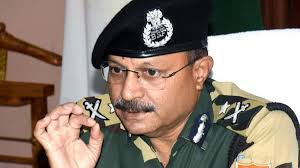BSF Rajasthan IG interview: ‘Nothing unexpected (during Op Sindoor) except sheer volume of drones, missiles launched by Pakistan’

In a recent interview, the Inspector General (IG) of the Border Security Force (BSF) in Rajasthan spoke about the challenges faced during Operation Sindoor. The operation aimed to strengthen security along the India-Pakistan border. While the situation largely matched expectations, the IG highlighted the unexpected increase in the number of drones and missiles launched by Pakistan.
Operation Sindoor: Strengthening Border Defenses
Operation Sindoor focused on tightening border security in Rajasthan, which shares a long and sensitive boundary with Pakistan. The BSF increased troop deployments and upgraded surveillance to prevent infiltration attempts. The IG described the operation as complex, involving traditional patrols alongside new technologies to detect threats early.
The goal was to maintain firm control over the border and respond quickly to any hostile activity.
The Rising Threat of Drones and Missiles
What surprised Indian forces most during Operation Sindoor was the sharp rise in drone and missile activity from Pakistan. The IG said Pakistan used drones not only for spying but also for attacks. These unmanned aerial vehicles flew low and fast to avoid detection, making them difficult to counter.
Missile launches also increased, targeting forward posts and critical infrastructure. These attacks forced the BSF to rethink their defenses. Traditional methods focused on stopping infiltration by foot or vehicle, but drones and missiles required new tactics.
New Technology and Tactics
To meet these threats, the BSF deployed several advanced technologies:
- Radar Systems: These track low-flying drones and missiles in real-time, providing early warnings.
- Electronic Jamming Devices: These disrupt drone communication, causing drones to lose control or turn back.
- Integrated Command Centers: They collect data from multiple sources to give a clear operational picture.
These tools improved detection and helped the BSF respond faster. Coordination with the Indian Air Force and Army ensures that threats get neutralized quickly.
Learning and Adapting on the Ground
The IG praised the BSF troops for their resilience and quick adaptation to new threats. He said the forces increased night patrols and set up quick-reaction teams ready to move at a moment’s notice. Intelligence sharing among security agencies also improved, helping them predict attacks better.
Training programs now focus on handling drones, teaching soldiers how to detect and disable them effectively.
The Human Factor: BSF’s Dedicated Personnel
The IG emphasized the bravery and dedication of the soldiers on the frontline. The continuous drone surveillance and missile attacks are mentally and physically challenging. Despite harsh desert conditions, the troops remain alert and motivated.
The BSF also provides psychological support and ensures rest periods to help soldiers cope with stress.
Broader Implications and What Lies Ahead
The rise in drone and missile attacks shows Pakistan’s shift towards using technology in border conflicts. These low-cost, high-impact tactics bypass traditional defenses, forcing India’s forces to stay one step ahead.
The IG expressed confidence in the BSF’s ability to face these challenges. He said Operation Sindoor improved their readiness and resolve to protect the nation.
Conclusion
Operation Sindoor revealed how security threats are changing along the India-Pakistan border, especially in Rajasthan. The surge in drone and missile activity highlights the need for constant upgrades in technology and tactics.
With motivated personnel and new tools, the BSF is better prepared to meet future challenges. The experience from Operation Sindoor strengthens India’s western border defense and prepares it for modern warfare.






